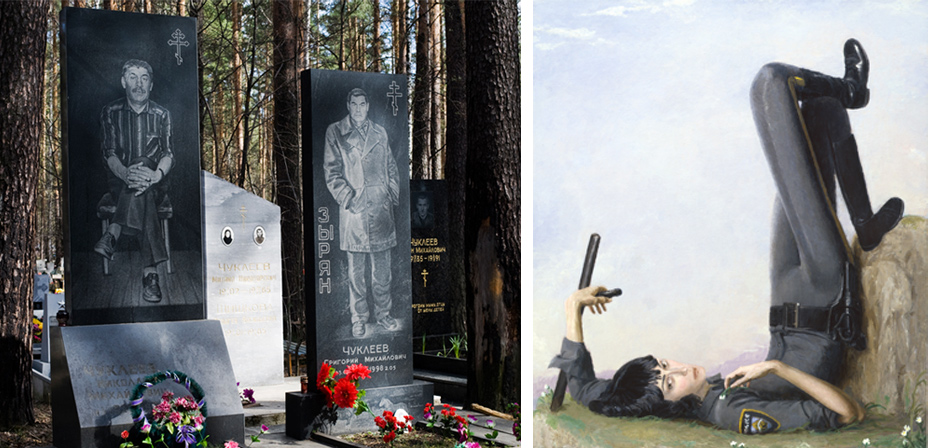Betty Wood dissects the Saatchi Gallery’s sprawling show, which offers less flesh and more flashes of individual genius

”Less is more only when more is too much” said Frank Lloyd Wright. Solid advice, pertinent to the new exhibition, Body Language, at the Saatchi Gallery. The sprawling exhibition sees the work of 19 artists, loosely themed around the presentation of the human body, displayed across three floors of the colossal gallery space.
I say loosely, and mean loosely; though the human form is present in the works on display, it’s not really a show about the human body. Instead, the human form (in its often freely executed form) is the vehicle or figurative window through which we arrive at a series of thematic discussions and observations on gender, sexuality, mortality, and fantasy, to name but a few. And just as that brief list of ‘topical’ subjects suggest, it is a rather vast exhibition – something of a stumbling point. Whilst it dilutes rather than reinforces the overall “concept” of the show, it does allow individual paradigms to bubble to the surface.Body Language successfully highlights the re-emergence of the figurative in contemporary American art with the work of Chantal Joffe’s a strong example of this: Joffe’s oil portraits of (mostly) anonymous women are derived from photographs found in family albums, magazine advertisements and pornography. Exploring the depiction of women in the western world, particularly the western media, her paintings are more than just “an act of reclamation by a female painter, returning the represented women to the realms of ambiguity”. Their occupations have rendered these women anonymous – generic swimsuit model, anonymous porn star – and Joffe muddies this further by obscuring their facial features and naming the portraits not after their human subject, but after their settings or dress, in homage to the Renaissance tradition of portraiture before her.
“Given the ambitiousness of the show’s size, their work becomes lost in a current of red white and blue, largely applied with acrylics and oils”
The layout of Joffe’s working the gallery is both interesting and rather obvious. Along one wall, a series of small, more crudely rendered portraits reflect the casualness of the family albums they are derived from. These images explore the representation of family, the posed and the practiced studio shots that end up on Christmas cards etc, and the curation (and the candidness) of family life. The series is bisected by a string of paintings of pornographic tableaux – an obvious gesture – highlighting the irony that the family unit is the product of sex, but sex itself is void within the photographs preceding. The result, a stark fetishisation.
Gallery five plays host to works by Denis Tarasov and Marianne Vitale. Two of the few non-American artists exhibiting, they explore the concept of legacy, of framing the perception of ourselves for future consumption in the face of death and our desire to be remembered. Tarasov’s photography series on gravestones from the Yekaterinburg and Dnepropetrovsk graveyards are mesmerising: expensive and elaborate etchings of individuals astride the bonnet of their car, wearing designer clothing and expensive jewellery – consumerism is a sentiment echoed in the paintings of Henry Taylor’s ‘WAL MART, ‘HUMAN HAIR’ portraits – a finely executed social documentary. Vitale’s withered gravestones pick up the mantel, exploring the desire for permanence, and casting a sombre mood within the exhibition.Other highlights include Tanyth Berkeley’s portraits of women, examining the concept of beauty. Echoing the heightened artifice of Renaissance portraiture – elaborate pastoral settings, exaggerated though oft vacant expressions – Berkeley celebrates transgressive beauty in her images of Grace, an albino woman, and her transwomen sitters, inverting the idea of the ‘male gaze’ and conventional ‘beauty’ with sensitivity and playfulness. The ‘male gaze’ is a baton picked up by Jansson Stenger in his portraits of female police officers. Despite their uniforms, modern dress, they sit against pastoral backdrops, adhering to a romantic tradition with their passive gazes and elongated limbs (again, fashioned in Renaissance style akin to Parmigianino’s ‘Madonna with the Long Neck’). The result questions the progress of gender equality; despite their modern occupation, the women appear as passive as their romantic predecessors.
As mentioned, the exhibition is somewhat sprawling; and the works of Tarasov and Vitale contrast to the rest of the exhibition, not just in their tone and subject, but also in their nationality. The bulk of the show is by American artists, and as juxtaposition to this sense Americanness, their inclusion stands strong. But given the ambitiousness of the show’s size, their work becomes lost in a current of red white and blue, largely applied with acrylics, oils and a lack of reference for technical precision.
Body Language runs at the Saatchi Gallery until March 2014




